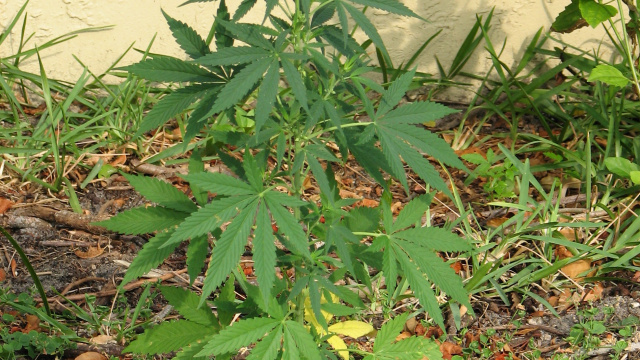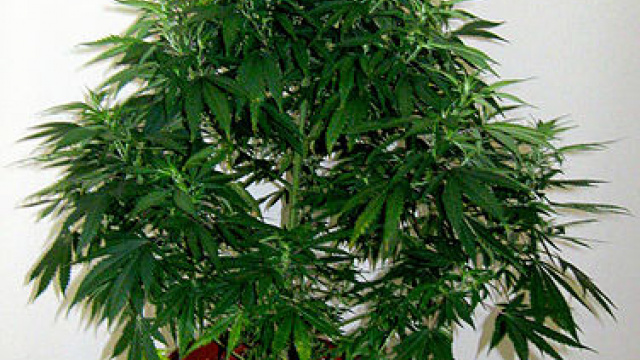 The 15-year struggle to legalize medical marijuana in the District ended like this: A 51-year-old Northwest resident entered a North Capitol Street rowhouse Monday evening and emerged 90 minutes later with slightly less than a half-ounce of street-legal, high-grade, D.C.-grown cannabis.
The 15-year struggle to legalize medical marijuana in the District ended like this: A 51-year-old Northwest resident entered a North Capitol Street rowhouse Monday evening and emerged 90 minutes later with slightly less than a half-ounce of street-legal, high-grade, D.C.-grown cannabis.
Shortly before 6 p.m., Alonzo walked into the high-security sales room of the Capital City Care dispensary with two store employees to consummate the city’s first legal marijuana deal in at least 75 years. He purchased about $250 worth of three strains of cannabis.
“It’s a beautiful natural product that is from rain, sun and soil,” Alonzo said, wearing a dark T-shirt with a green logo of a cannabis leaf over a medical cross. “Mother Nature doesn’t make mistakes.”
Alonzo agreed to share his experiences navigating the District’s medical marijuana system on the condition that he be identified only by his middle name, concerned that public knowledge of his medical marijuana use could prove sensitive at work.
Capital City Care’s sales Monday to two patients represent the culmination of a fight that dates to the mid-1990s, when HIV/AIDS activists first fought to put medical marijuana on the citywide ballot. Nearly 70 percent of voters approved a 1998 legalization initiative, but Congress intervened for more than a decade, preventing the implementation of a medical marijuana program.
After Congress lifted its restrictions in 2009, the District government started a slow process to set up a strict regulatory and licensing regime limited to city residents with specific chronic illnesses, with lawmakers and city officials saying they were moving deliberately to reduce the risk of future federal intervention.
Initial hopes that cannabis could be made available to patients in late 2010 gave way to early 2011 and then mid-2012 as the city moved through the painstaking and politically sensitive process of licensing marijuana growers and retailers, as well as certifying the doctors who would recommend the medicine and patients who would consume it.
Alonzo, who is HIV-positive, said he had been following the rollout of the medical marijuana program since the beginning of the year. The combination of antiviral drugs he takes to manage his infection, Alonzo said, causes him frequent insomnia and occasional difficulty in swallowing and digesting.
Marijuana, he said, was not initially his preferred therapy. “Like many people, I certainly had my fair share in college, but then I really left it alone for a long time,” he said. A mid-1990s trip to Amsterdam with his former partner, who had a more advanced HIV infection, demonstrated how cannabis could help address the virus’s symptoms and the side effects of the drugs used to treat them.
In March, Alonzo approached his doctor about seeking a marijuana recommendation.
“He asked why, and I outlined my challenges,” he said. “I really don’t want to have a prescription drug dependency, and they weren’t working for the insomnia. He was agreeable to it. And then the long wait.”
To secure his first dose, Alonzo had to visit his doctor, who had to request recommendation forms from the health department, which then processed the forms and issued him a patient card.
Although the city’s medical marijuana program has started, it remains a slow start.
D.C. Health Department spokeswoman Najma Roberts said that as of Monday, only nine patients have obtained a city-issued medical marijuana card. About 20 doctors, she said, have requested forms from the city allowing them to recommend cannabis to their patients.
Capital City Care, the first of three planned District dispensaries to secure an operating license, offers four strains of medical cannabis, priced from $380 to $440 an ounce, grown by Northeast-based Holistic Remedies. More varieties will be offered once two other cultivation centers — including Capital City Care’s own — produce their first salable harvest, said Scott Morgan, a spokesman for Capital City Care.
Morgan said he was not aware of any health insurers willing to cover medical marijuana purchases. The prices, he said, reflect the highly regulated nature of the District’s system and the firm’s investment in its dispensary and growing operations.
Senior citizens, veterans and low-income patients are eligible for discounts of 10 to 15 percent, he said.
“After a couple of years of hard work, it’s exciting to open our doors and serve the patients our facility is really for,” Morgan said. “This is a moment we’ve all been looking forward to for a long time.”
Alonzo opted for the Blue Dream, Jack Herer and Master Kush strains and, to consume it, a $120 Magic Flight vaporizer.
The StickyGuide, a Web site reviewing medical marijuana strains and dispensaries, said Blue Dream “is helpful for reducing pain and stress while maintaining energy levels” and offers a flavor “reminiscent of hash with a subtle hint of blueberry underneath.” Master Kush, the site says, is a “classic indica-dominant strain” whose characteristics include “helping [to] promote relaxation and assisting with sleep.”
Wayne Turner, one of the leaders of the 1998 initiative effort, called Monday’s sales “the end of the beginning.”
“It’s taken us 15 years to get to this point,” he said, adding that the program had much left to prove. “We can do this. We can do this right. The world isn’t going to come to an end. People are going to have access to something that really is going to help them, really help them ease their suffering.”
Source: Washington Post (DC)
Author: Mike DeBonis
Published: July 29, 2013
Copyright: 2013 Washington Post Company
Contact: [email protected]
Website: http://www.washingtonpost.com/



Leave a Reply